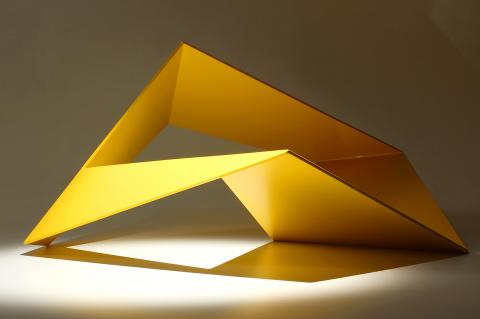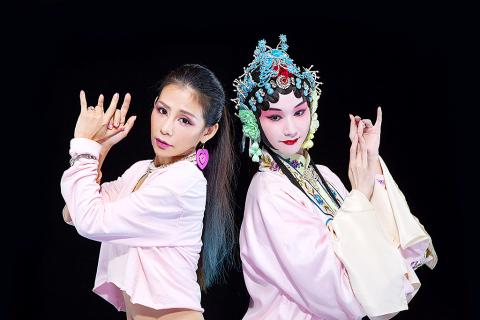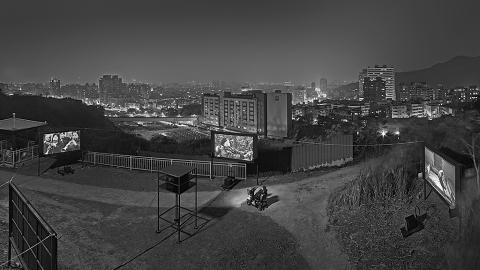The museum at the National Taipei University of Education (北師美術館) presents Bishijo: Young Pretty Girls in Art History (美少女的美術史), an exhibition about a special lineage of Japanese art that focuses on bishojo, a Japanese term that literally means “beautiful young girls.” The show includes various depictions of feminine beauty from the 17th century to the present, as depicted in Japanese traditional and western paintings, manga, sculptures and new media art. Works by over 60 artists are featured in the show, beginning with examples of ukiyo-e, a popular painting and woodcut style of the Tokugawa shogunate. Later in the 20th century, a burgeoning market for young female consumers inspired many cartoons, video games and illustrations about youth and beauty. One of the latest manifestations of bishojo is Hatsune Miku, a 16-year-old virtual idol that incorporates audiovisual technologies during live performances.
■ Museum of National Taipei University of Education (北師美術館),134 Heping E Rd Sec 2, Taipei City (台北市和平東路二段134號), tel: (02) 2732-4084. Open Tuesdays to Sundays from 10am to 5pm
■ Until Nov. 24

Photo Courtesy of Eslite Gallery
As a founding member of the painting alliance Fifth Moon Group (五月畫會), Han Hsiang-ning(韓湘寧) has been a significant figure in the modern art scene since the 1960s. His early work explored form and space in abstract painting, while experiments with photography also played a big part in his art vocabulary. Han eventually moved to New York, where art trends of the time such as minimalism and pop art greatly influenced his work and shaped his later photorealist style, for which he is best known. A retrospective of his work at Asia Art Center (亞洲藝術中心) focuses on Han’s achievements in the 60s, an exciting time marked by radical art movements. Highlights include Representing 1960 (再現1960), a series of digital prints based on Han’s paintings modified with layers of acrylic and varnish. Two of Han’s experimental films are also on view, including Run, which pays homage to John Cage’s seminal work 4’33”.
■ Asia Art Center I (亞洲藝術中心一館), 93, Lequn 2nd Rd, Taipei City (台北市樂群二路93號); Asia Art Center II (亞洲藝術中心二館) 93 Lequn 2nd Rd, Taipei City (台北市樂群二路93號). tel: (02) 8502-7939. Open Tuesdays to Sundays from 10am to 6:30pm
■ Until Sept. 15

Photo Courtesy of Museum of National Taipei University of Education
Gems from the National Palace Museum’s Collection of Rare and Antiquarian Books (院藏善本古籍選粹) is currently on view at the National Palace Museum (國立故宮博物院). The show is a selection of prints, manuscripts, copied volumes and annotated works by renowned scholars from the Song, Yuan, Ming and Qing dynasties. Providing valuable insight into the developments of scholarly studies and book-making technology in China, many of these artifacts were originally commissioned and purchased by imperial order for the enjoyment of the emperor only. Other works, mostly Ming dynasty prints and maps, were part of the former National Library of Beiping (北平圖書館). The Kangxi Kangyur is a Tibetan script of Buddhist sutras and monastic codes elaborately decorated with painted images, jewelry and embroidery.
■ National Palace Museum (國立故宮博物院), 221 Zhishan Rd Sec 2, Taipei City (台北市至善路二段221號), tel: (02) 2881-2021. Open daily from 8:30am to 6:30pm; closes at 9pm on Fridays and Saturdays
■ Until Feb. 16

Photo Courtesy of Lin & Lin Gallery
Lin & Lin Gallery’s (大未來林舍畫廊) A Thousand Faces: The Transformation of Laksana (伶變:眾相流轉) is a group exhibition of seven established and mid-career Chinese and Taiwanese artists. Isa Ho (何孟娟) is a Keelung-born photographer and mixed-media artist interested in exploring human psychology and urban narratives. Her single channel video, Peony (牡丹), includes elements of K-pop, Peking opera, Kun opera, cosplay and Buddhist imagery, which together trace a kinship amongst East Asian cultures, says the gallery. Chen Ching-yao (陳擎耀) is a Taipei-based artist who creates video installations, paintings and photographs that often appropriate symbols of popular culture and tradition. The show includes a series of Chen’s photographs in which cosplay actors imitate scenes from Japanese oral history.
■ Lin & Lin Gallery (大未來林舍畫廊), 16 Dongfeng St, Taipei City (台北市東豐街16號), tel: (02) 2700-6866. Open Tuesdays to Sundays from 11am to 7pm
■ Until Aug. 31

Photo Courtesy of Lin & Lin Gallery
In traditional Chinese painting, leaving blank space is an essential compositional technique that fosters an appreciation of emptiness. Art of Absence (留白) is a group exhibition that examines how such aesthetic traditions are interpreted in art practices today. The show presents a selection of drawings, paintings, objects and sculptures from different generations of contemporary artists. Cheng Nung-hsuan (鄭農軒) is a Taipei-born painter who deconstructs classical forms with abstract gestures. Through a process of layering and erasing contours and colors, Cheng negotiates with fragments of narratives, opening up a space of uncertainty. Lee Mau-cheng (李茂成) is a painter with a background in traditional ink art. Depicting natural scenes with countless, refined marks, Lee’s work expresses a rich dynamic between the abstract and concrete.
■ Eslite Gallery (誠品畫廊), 5F, 11 Songgao Rd, Taipei City (台北市松高路11號5樓), tel: (02) 8789-3388. Open Tuesdays to Sundays from 11am to 7pm
■ Until Sept. 1

Even by the standards of Ukraine’s International Legion, which comprises volunteers from over 55 countries, Han has an unusual backstory. Born in Taichung, he grew up in Costa Rica — then one of Taiwan’s diplomatic allies — where a relative worked for the embassy. After attending an American international high school in San Jose, Costa Rica’s capital, Han — who prefers to use only his given name for OPSEC (operations security) reasons — moved to the US in his teens. He attended Penn State University before returning to Taiwan to work in the semiconductor industry in Kaohsiung, where he

On May 2, Chinese Nationalist Party (KMT) Chairman Eric Chu (朱立倫), at a meeting in support of Taipei city councilors at party headquarters, compared President William Lai (賴清德) to Hitler. Chu claimed that unlike any other democracy worldwide in history, no other leader was rooting out opposing parties like Lai and the Democratic Progressive Party (DPP). That his statements are wildly inaccurate was not the point. It was a rallying cry, not a history lesson. This was intentional to provoke the international diplomatic community into a response, which was promptly provided. Both the German and Israeli offices issued statements on Facebook

May 18 to May 24 Pastor Yang Hsu’s (楊煦) congregation was shocked upon seeing the land he chose to build his orphanage. It was surrounded by mountains on three sides, and the only way to access it was to cross a river by foot. The soil was poor due to runoff, and large rocks strewn across the plot prevented much from growing. In addition, there was no running water or electricity. But it was all Yang could afford. He and his Indigenous Atayal wife Lin Feng-ying (林鳳英) had already been caring for 24 orphans in their home, and they were in

Australia’s ABC last week published a piece on the recall campaign. The article emphasized the divisions in Taiwanese society and blamed the recall for worsening them. It quotes a supporter of the Taiwan People’s Party (TPP) as saying “I’m 43 years old, born and raised here, and I’ve never seen the country this divided in my entire life.” Apparently, as an adult, she slept through the post-election violence in 2000 and 2004 by the Chinese Nationalist Party (KMT), the veiled coup threats by the military when Chen Shui-bian (陳水扁) became president, the 2006 Red Shirt protests against him ginned up by